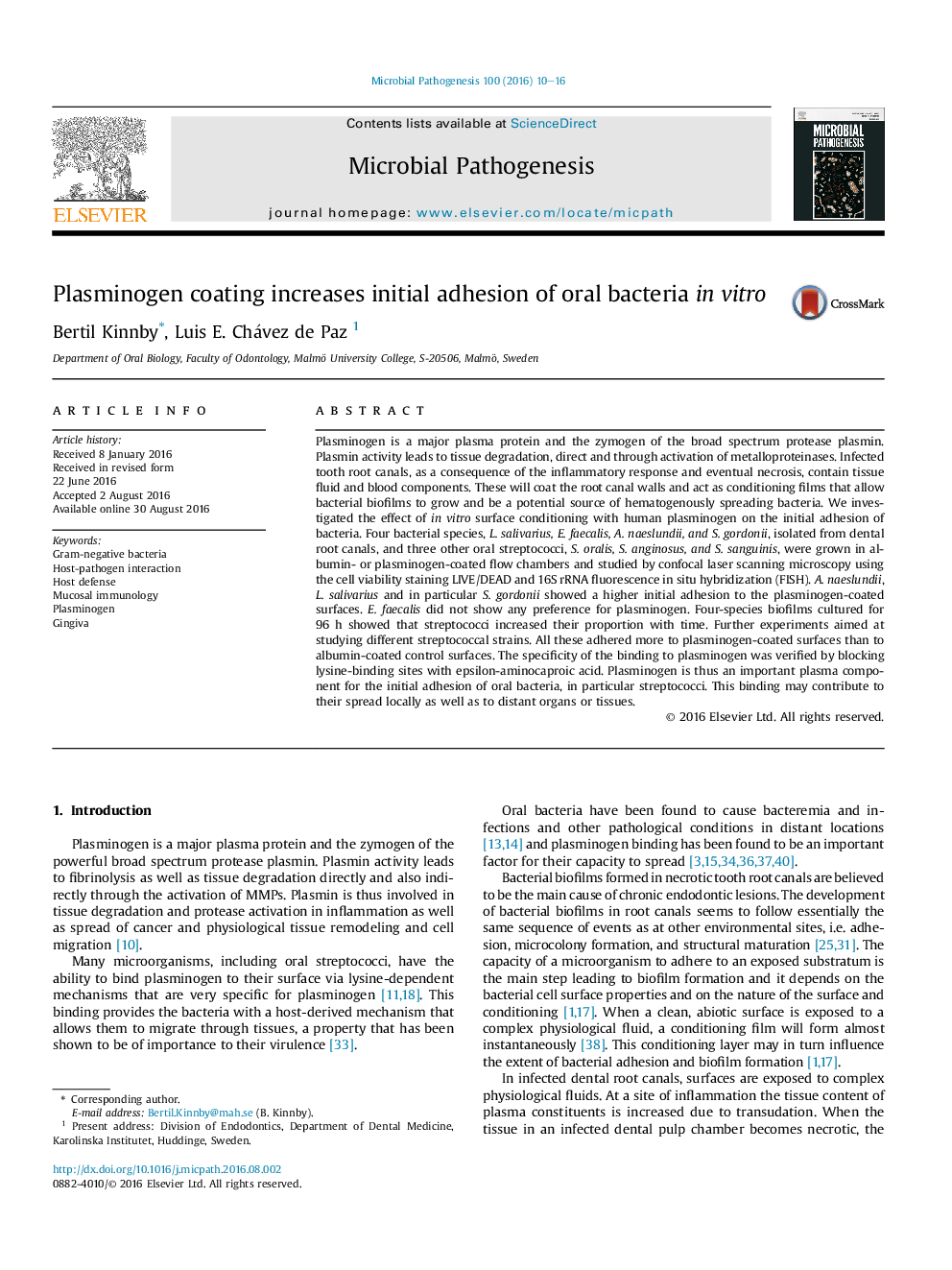| کد مقاله | کد نشریه | سال انتشار | مقاله انگلیسی | نسخه تمام متن |
|---|---|---|---|---|
| 3416197 | 1593689 | 2016 | 7 صفحه PDF | دانلود رایگان |
• The adhesion of oral bacteria to plasminogen- or albunim-coated surfaces was studied with confocal laser scanning microscopy.
• Streptococci, A. naeslundii, L. salivarius but not E. faecalis showed higher initial adhesion to plasminogen-coated surfaces.
• The specificity of the binding to plasminogen was verified by blocking lysine-binding sites with epsilon-aminocaproic acid.
Plasminogen is a major plasma protein and the zymogen of the broad spectrum protease plasmin. Plasmin activity leads to tissue degradation, direct and through activation of metalloproteinases. Infected tooth root canals, as a consequence of the inflammatory response and eventual necrosis, contain tissue fluid and blood components. These will coat the root canal walls and act as conditioning films that allow bacterial biofilms to grow and be a potential source of hematogenously spreading bacteria. We investigated the effect of in vitro surface conditioning with human plasminogen on the initial adhesion of bacteria. Four bacterial species, L. salivarius, E. faecalis, A. naeslundii, and S. gordonii, isolated from dental root canals, and three other oral streptococci, S. oralis, S. anginosus, and S. sanguinis, were grown in albumin- or plasminogen-coated flow chambers and studied by confocal laser scanning microscopy using the cell viability staining LIVE/DEAD and 16S rRNA fluorescence in situ hybridization (FISH). A. naeslundii, L. salivarius and in particular S. gordonii showed a higher initial adhesion to the plasminogen-coated surfaces. E. faecalis did not show any preference for plasminogen. Four-species biofilms cultured for 96 h showed that streptococci increased their proportion with time. Further experiments aimed at studying different streptococcal strains. All these adhered more to plasminogen-coated surfaces than to albumin-coated control surfaces. The specificity of the binding to plasminogen was verified by blocking lysine-binding sites with epsilon-aminocaproic acid. Plasminogen is thus an important plasma component for the initial adhesion of oral bacteria, in particular streptococci. This binding may contribute to their spread locally as well as to distant organs or tissues.
Journal: Microbial Pathogenesis - Volume 100, November 2016, Pages 10–16
